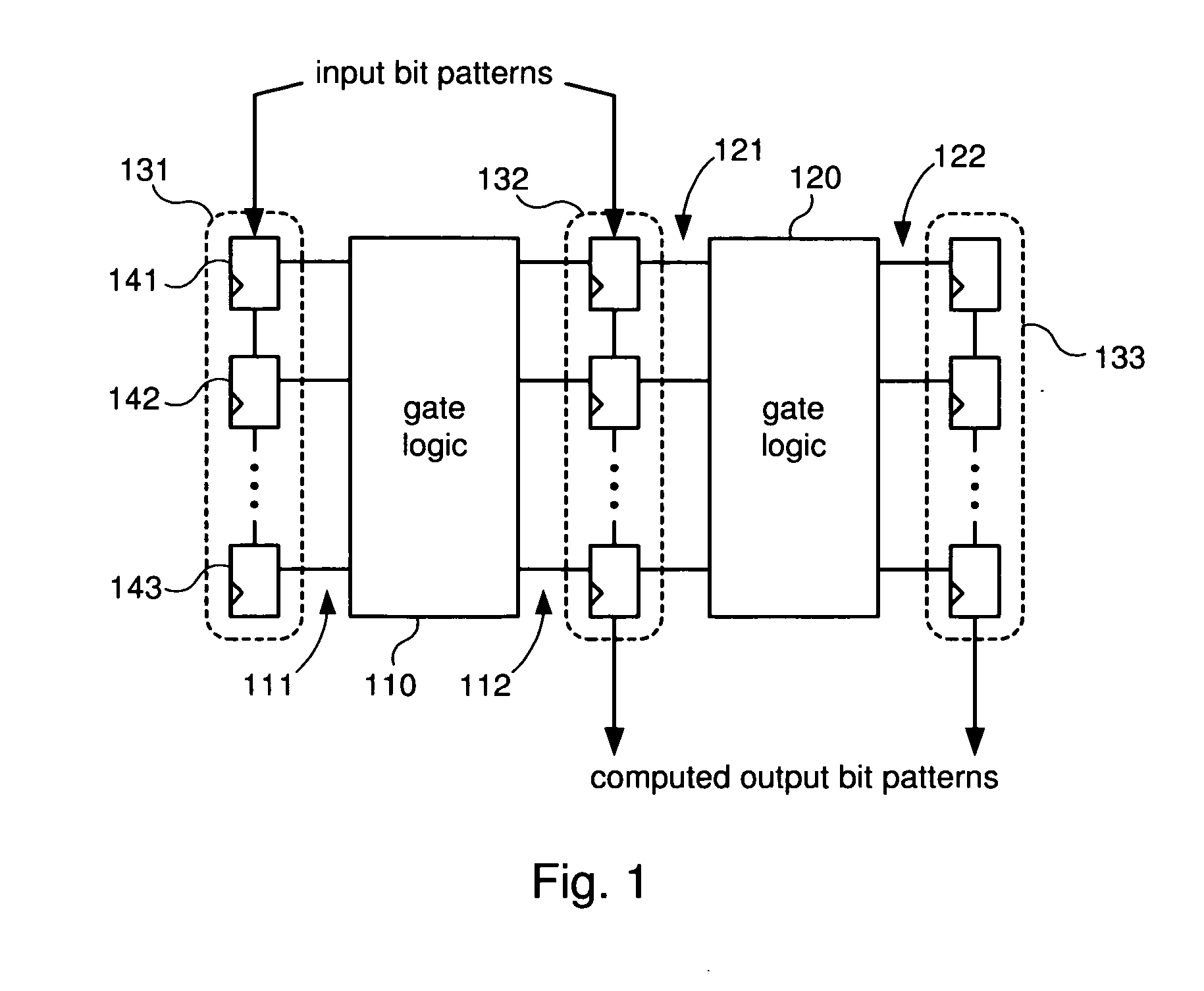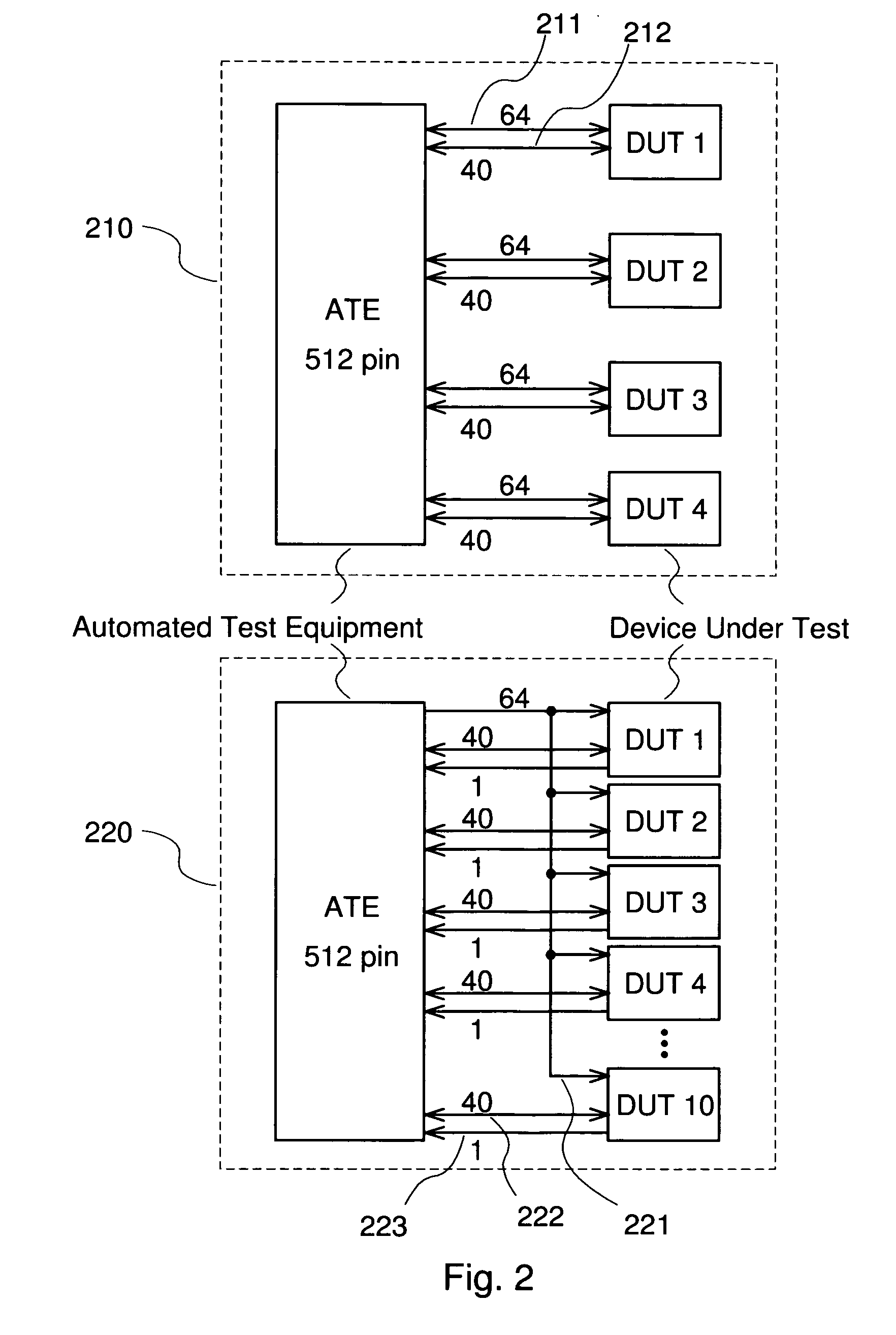Multi-test method for using compare MISR
a compare misr and multi-testing technology, applied in error detection/correction, instruments, computing, etc., can solve the problem of reducing the bandwidth required to communicate the result(s), and achieve the effect of reducing the number of pins/connections and reducing the amount of processing
- Summary
- Abstract
- Description
- Claims
- Application Information
AI Technical Summary
Benefits of technology
Problems solved by technology
Method used
Image
Examples
Embodiment Construction
[0030] One or more embodiments of the invention are described below. It should be noted that these and any other embodiments described below are exemplary and are intended to be illustrative of the invention rather than limiting.
[0031] Broadly speaking, the invention includes systems and methods for increasing the number of devices having LBIST circuitry that can be tested at the same time by reducing the number of necessary connections between the devices under test and a test system. Various embodiments may reduce the bandwidth required of the logic built-in-self-test (LBIST) circuitry and increase the number of devices that can be connected automated test equipment when performing logic built-in-self-tests. These benefits can be obtained by configuring the LBIST circuitry to perform evaluations of computed results within the same device (“on-chip”).
[0032] In one embodiment, a STUMPS-type LBIST test architecture is incorporated into the design of a logic circuit. The LBIST compo...
PUM
 Login to View More
Login to View More Abstract
Description
Claims
Application Information
 Login to View More
Login to View More - R&D
- Intellectual Property
- Life Sciences
- Materials
- Tech Scout
- Unparalleled Data Quality
- Higher Quality Content
- 60% Fewer Hallucinations
Browse by: Latest US Patents, China's latest patents, Technical Efficacy Thesaurus, Application Domain, Technology Topic, Popular Technical Reports.
© 2025 PatSnap. All rights reserved.Legal|Privacy policy|Modern Slavery Act Transparency Statement|Sitemap|About US| Contact US: help@patsnap.com



